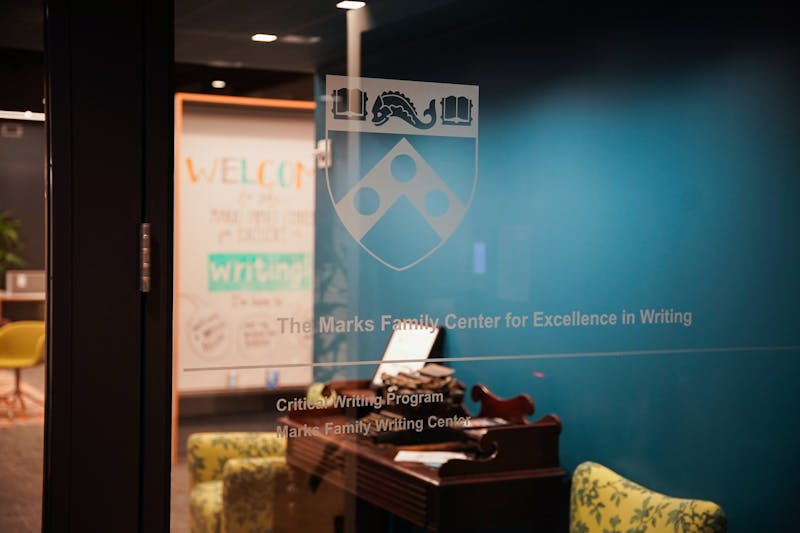Blurring the boundaries between art and science, a monumental new sculpture was unveiled on March 12, inspiring hope for cancer research.
Called “Homologous Hope,” the structure floats “like a cloud” in the airy glass atrium of the Basser Research Center for BRCA, artist Mara Haseltine said.
Its delicate appearance belies its weight — the sculpture consists of almost 560 pounds of carbon fiber suspended from the ceiling by a stainless steel ring weighing almost 400 pounds.
“Homologous Hope” is also remarkable because it is a scientifically accurate reproduction of DNA repair through the process of homologous recombination.
Through an LED light show, the sculpture depicts the protein BRCA2 repairing a damaged strand of DNA, a process crucial in preventing breast, ovarian and pancreatic cancers.
Roger Greenberg, the Director of Basic Science at the Basser Center and professor of cancer biology at the Perelman School of Medicine, was one of the researchers who lent their scientific expertise to the design of the sculpture.
Those involved in the project wanted the DNA repair process to be “depicted artistically but still be faithful to the process,” Greenberg said. “It’s really a beautiful capture of how these proteins work to prevent cancer.”
Haseltine, who worked on “Homologous Hope” for a year and a half, said she set out to “create hope.” Her work demonstrates her fascination with sculpting scientific narratives.
“I come from a family of scientists, so I was always around science growing up,” she said. “I love science and I worked in my father’s lab growing up.”
After studying studio art and art history at Oberlin College and receiving her master’s degree at the San Francisco Art Institute, Haseltine went on to develop her own work inspired by the “grand gestures” of environmental work like Robert Smithson’s famous sculpture Spiral Jetty.
“I really like making site-specific work so that it’s about the story about what the science is at a particular university or lab,” Haseltine said. Molecular structures in particular inspire her because their “forms look really abstract because they exist in a reality where gravity doesn’t really pull on them.”
“Homologous Hope” was commissioned by the University to commemorate the research done at the Basser Center, which is the first of its kind to focus on BRCA. The center was established with a $25 million gift from Mindy and Jon Gray, 1992 College and 1992 College and Wharton graduates, respectively. In January, the Grays committed an additional $5 million to an external grant project run by Penn to expand BRCA research.
Director of the Institute for Contemporary Art at the University of Pennsylvania, Amy Sadao, said in an email that public art like “Homologous Hope” is valuable. “As an opportunity to contemplate beauty and power, public art reaches a wide audience,” she said.
Haseltine believes that her sculpture may “give hope to the space and the research that’s being done there.”
The Daily Pennsylvanian is an independent, student-run newspaper. Please consider making a donation to support the coverage that shapes the University. Your generosity ensures a future of strong journalism at Penn.
DonatePlease note All comments are eligible for publication in The Daily Pennsylvanian.








